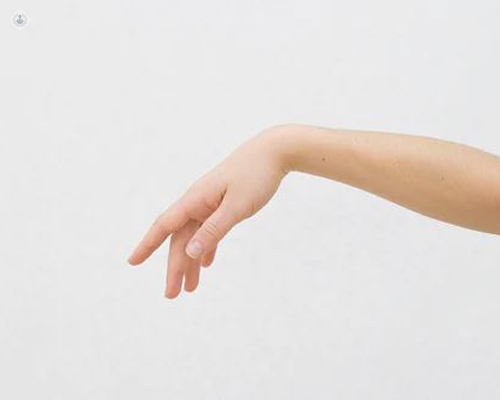Quick facts: What you need to know about ganglion cysts
Autore:Commonly appearing on the wrist, ganglion cysts can appear seemingly out of nowhere. Mr Harbhajan Plaha, a vastly experienced consultant orthopaedic surgeon based in Brentwood, covers the basics of ganglion cysts and what you need to know.

Ganglion cysts explained
A ganglion is a benign cyst that contains fluid or a thin jelly-like substance. It develops around tendons and joints, most commonly seen around the wrist, hands, fingers and the foot. However, it can develop anywhere where there is a joint or a tendon.
Causes of ganglion cysts
There are various reasons postulated why a ganglion develops, however, there is no firm conclusive evidence to suggest why a ganglion develops. Some of the ganglia originate from inside a joint and some are found around the lining of the tendons. As the ganglion is benign, it grows very slowly.
Symptoms of ganglion cysts
A ganglion at the back of the wrist can feel either firm or hard. Occasionally, they are mistaken for a bony lump.
If they are present on the fingers, generally, they are painful and need treatment. Sometimes, the ganglia cause pressure on the surrounding structures, especially nerves, then they would need treatment.
Some of them occurring on the back of the wrist are painless and can be left untreated quite often. However, if they are painful, they will need treatment. Even though painless, patients may request treatment for cosmetic reasons as they can become quite large.
Not all ganglia need treatment. Some of them, if they are producing no symptoms, can be left alone as some of them tend to get smaller and indeed occasionally disappear over time. Therefore, treatment is largely for symptoms.

Treatment and removal of ganglion cysts
Small, painless ganglia can sometimes be squeezed, which can cause them to rupture and occasionally disappear. In ancient times, it was a practice to try and disperse them by hitting them with a Bible—hence the nickname bible bumps. The Bible was probably used as this was the largest book available.
Current treatment involves either aspiration or surgical excision. An aspiration involves putting a needle into the ganglion cyst and draining the fluid and making multiple punctures in the ganglion so it does not reform. Sometimes, a steroid is injected at the same time to prevent recurrence. This is done under local anaesthesia in the clinic.
If the ganglion recurs or is painful or large enough, it may need surgical excision. This is usually done under a general anaesthetic as a day case procedure. The sutures to close the wound are sometimes put under the skin. If nylon sutures are used to close the skin, these are usually removed in about 10 to 12 days. In the meantime, the patient is allowed to use the hand as comfortable. Following suture removal, the patient is generally discharged as no further treatment is necessary.
As some of the ganglia arise from the joint, they can recur. The reported recurrence rate in the literature is quite varied; this varies from about 3 per cent to 40 per cent. However, in my practice I have noticed a recurrence rate of around 5 per cent.
If you require expert diagnosis and treatment for a ganglion cyst, don't hesitate to book an appointment with Mr Harbhajan Plaha via his Top Doctors profile today.


